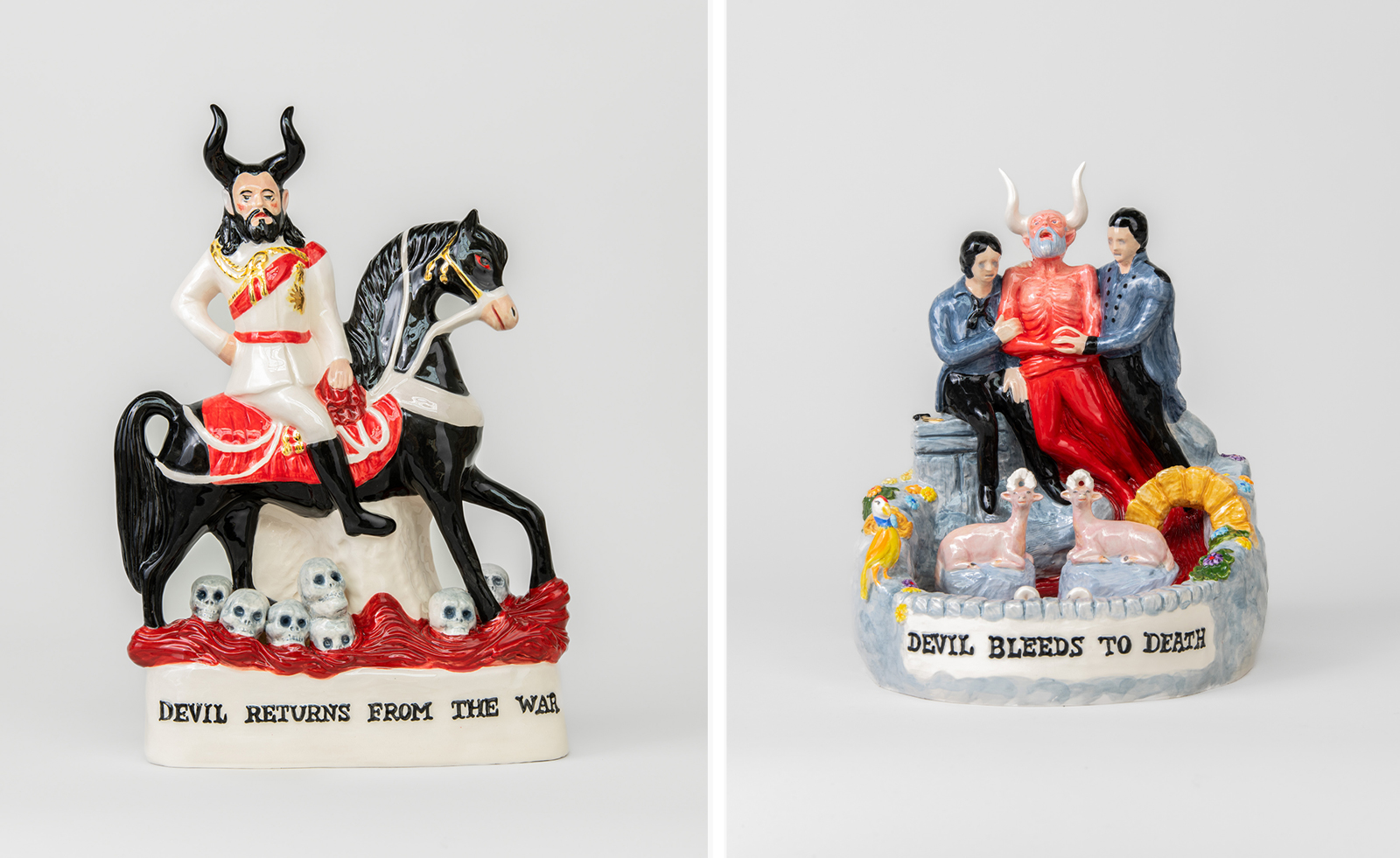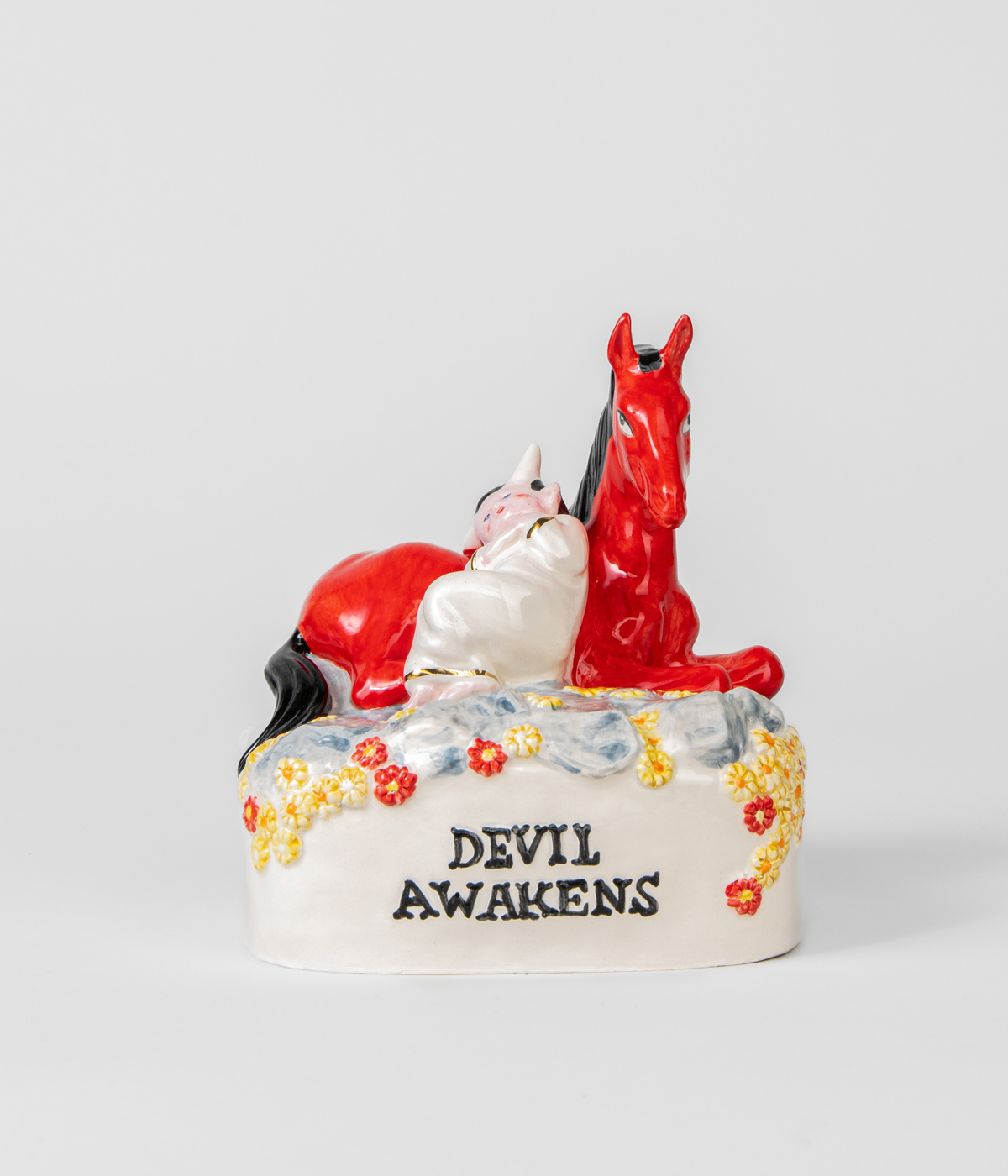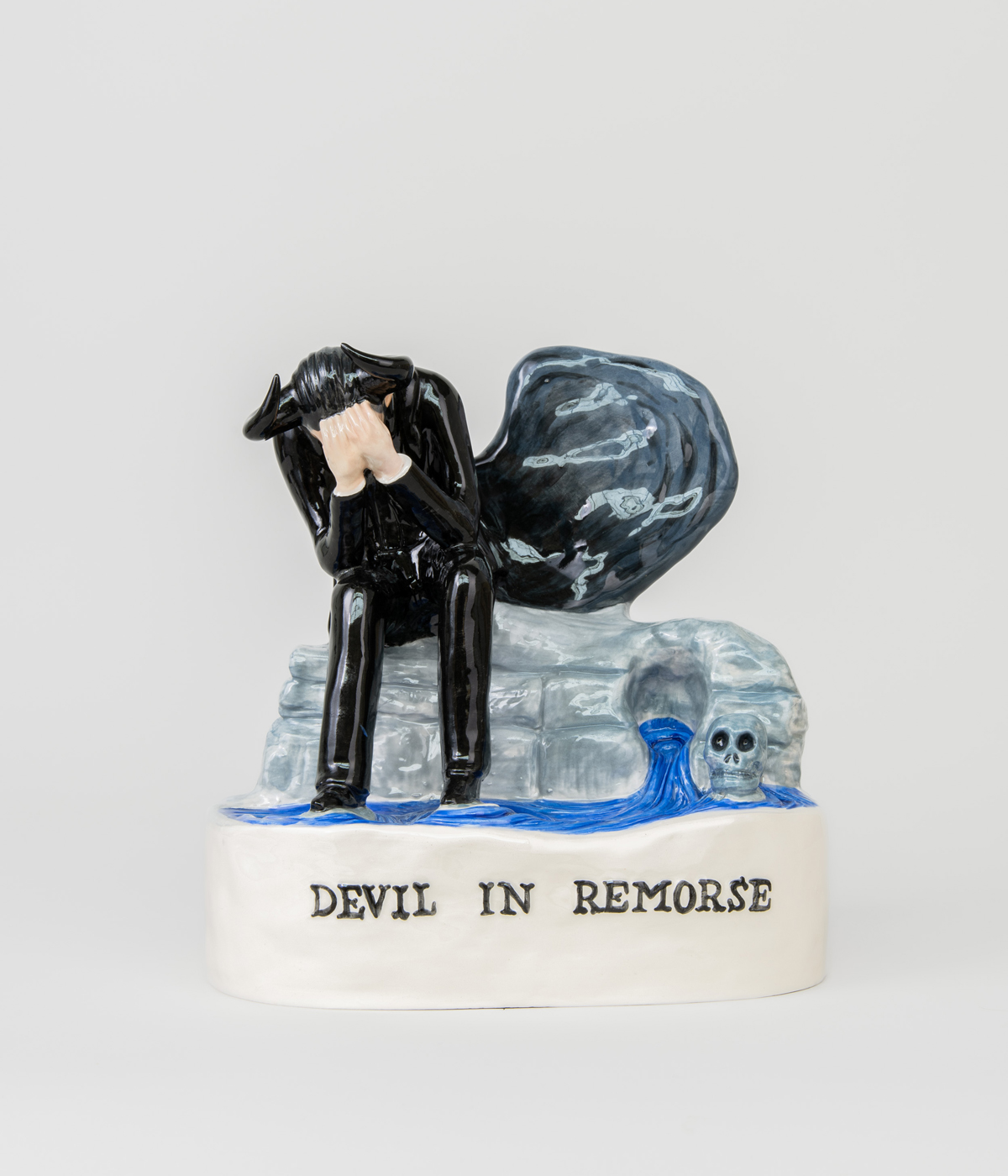
In musician and artist Nick Cave’s ceramics, the devil is a flawed individual, blessed and cursed with human weaknesses. In his 17 figurines, Cave traces the fluctuations of a life punctuated by a series of defining events, an artistic echo of Shakespeare’s ‘seven ages of man’. ‘What started as a desire to create a single small devil figure as a vehicle for an intense red glaze became a journey towards some kind of absolution from a series of shattering events,’ says Cave of the ceramic artworks, which encapsulate both an artistic and religious struggle (and follow previous ceramics such as a Nick Cave egg cup).
Nick Cave’s ceramics see a Devil who wants to be better

Cave’s Devil falls in love, goes to war, fights a lion. We follow his journey from innocence to experience, yet Cave rejects William Blake’s characterisation, also eschewing the figure in Milton’s Paradise Lost and Christopher Marlowe’s Doctor Faustus. Here, the Devil does bad things, but he wants to be better, and is tormented by remorse and guilt.
The figures themselves reference the pieces that populated the mantelpieces of Victorian Britain. Dating from the 1740s, figurines were created in large numbers between 1837 and 1900, and were frequently made by children. Dubbed ‘flatbacks’ due to their tendency to only be decorated on the visible front and sides, Cave’s versions are rich in colour and symbolism, with monkeys, dogs, rabbits, snakes and skulls drawn alongside red, black and white horses.

In ‘Devil in Remorse’, Cave himself sits, head in hands, the flawed figure we have seen throughout. For the artist, this project has been a personal one. ‘This [the ceramic works] – and in fact, all the songs that I write – are about the idea of forgiveness, the idea that there is a moral virtue in beauty. It’s a kind of balancing of our sins.’
Nick Cave, 'The Devil – A Life' takes place from 5 April – 11 May 2024 at Xavier Hufkens in Brussels







